Create and Update an Exchange
This topic details how to create an exchange of your Revit model using the Autodesk Data Exchange Connector for Revit and save it to Autodesk Docs. After the exchange is created successfully, it will be listed in Revit to view or update later.
Create an Exchange
In the Revit software, make sure you have saved all the changes to your Revit model.
Click Data Exchange command.
For Autodesk Data Exchange Connector for Revit 2024, 2025, and 2026 the Data Exchange command is available under Collaborate tab.

For Autodesk Data Exchange Connector for Revit 2023, the Data Exchange command is available under Data Exchanges tab.

Important: Sometimes, you may encounter difficulties starting the connector, potentially because of some plugins that are enabled within the Revit software. We recommend reviewing and disabling incompatible plugins and restarting the connector. For further assistance, refer to the Troubleshooting.Sign in to the Autodesk Construction Cloud using your Autodesk credentials.
After signing in successfully, return to the Revit software.
If a latest version of your connector is available, you will receive a notification.

To download the latest connector version, click Help menu and select Check for Updates. This will redirect you to the download link.
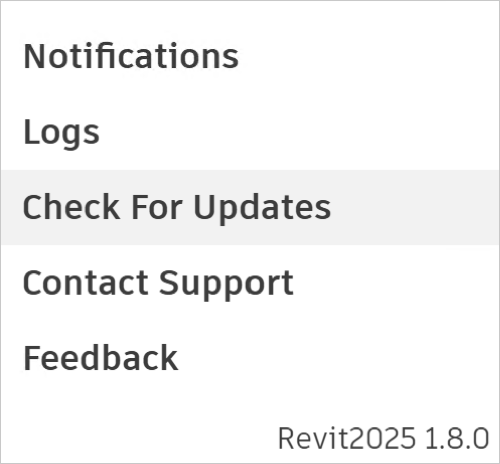
To manually check for updates, click Help menu and select Check for Updates. This will redirect to the download link, or you will see a "no updates available" notification.

Click Create exchange when the connector interface opens.
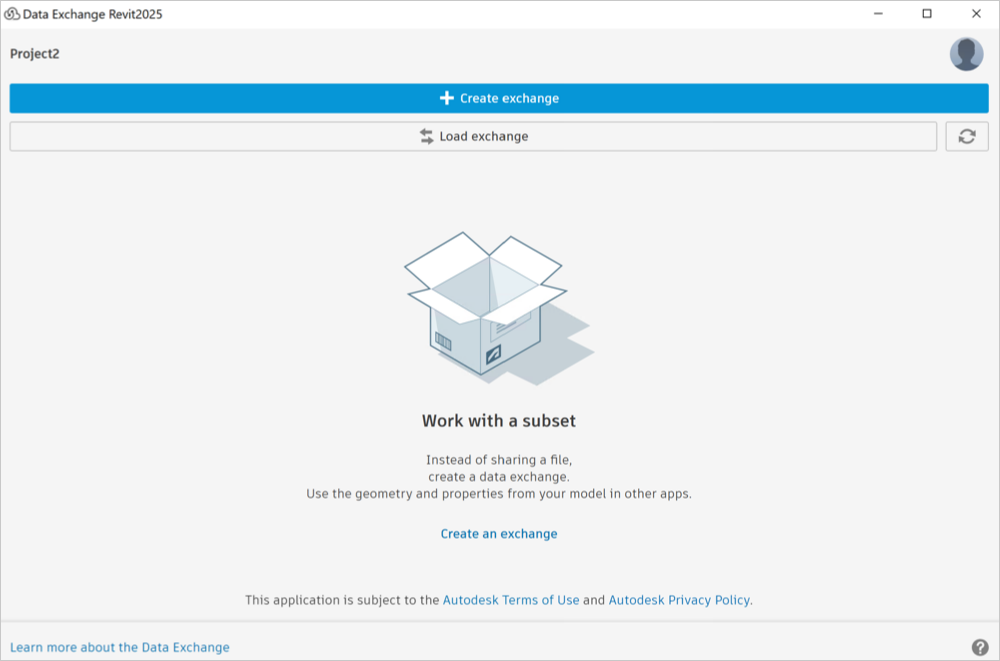
Enter the following:
Name: Enter a name for the exchange. The connector supports special characters in input fields except characters
<>:"/\|?.`*.Save to: Select a folder in Autodesk Docs to save your exchange.
Spatial Object Rooms: An option for the user to include spatial objects, specifically rooms, in the exchange. This option is exclusively available in Autodesk Data Exchange Connector for Revit 2026.
Exclude Rvt Link Elements Checkbox: When checked, this option will exclude elements from linked Revit models in the exchange. Note: The option to exclude linked Revit elements is available only if your drawing includes linked models. If you choose to use this option, the "Filter By" feature will be disabled.
View: Select a required 3D view from available options.
Filter By: Select the required filter from the following options.
None: Select to include all elements in the exchange.
Category: Select one or more categories to include in the exchange such as Doors, Walls, Windows, and so on. You can select or deselect all elements at once using the "Select All" checkbox.
Selection: To create a exchange with only selected elements, select them in the Revit model before creating the exchange.
Note: The "Selection" option is not available in Autodesk Data Exchange Connector for Revit 2024.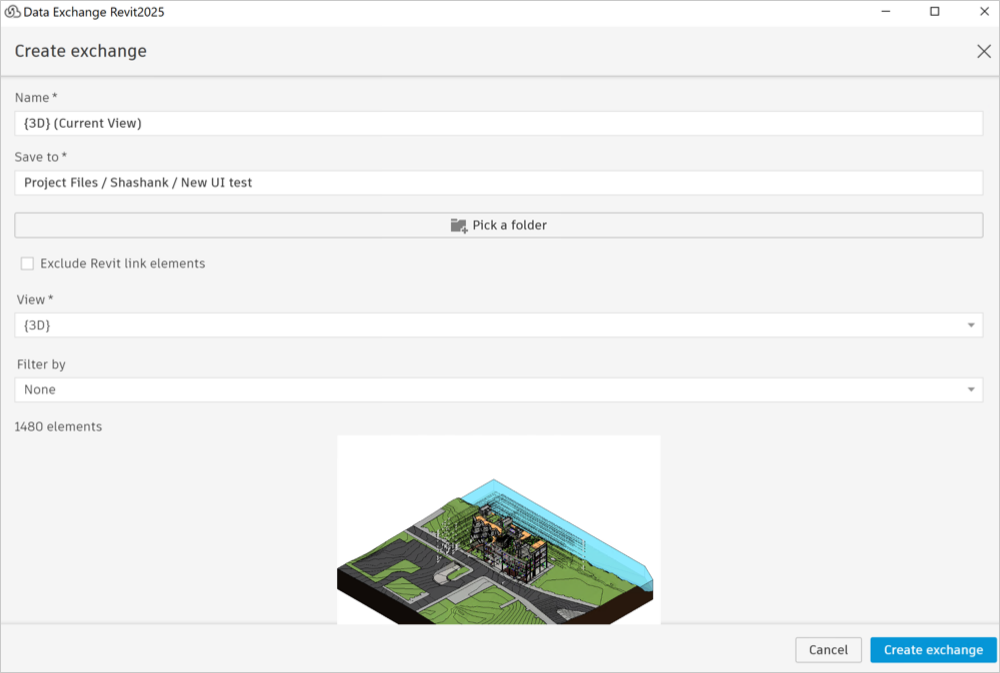
Save your RVT file and click Create exchange.
Note: For models exceeding 10,000 elements, a warning signals that exchange creation may take a few minutes. Maintain Revit active and consider smaller data subsets for expedited creation.If there are unsaved changes to your Revit model, save the changes in Revit before you proceed to create the exchange. Otherwise, you will be prompted to save your changes before the exchange is created. You can enable the Auto-save function to automatically save your changes.

After the exchange is created successfully, you can view the new exchange listed in Revit with details such as the name, version, date, and time.
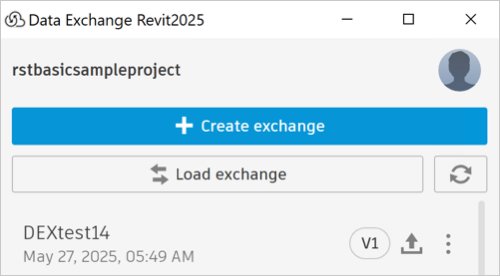 Note: The up-arrow button beside the exchange indicates that you created it using your Revit model. If you modify your model locally, then you can update the exchange with the latest changes.
Note: The up-arrow button beside the exchange indicates that you created it using your Revit model. If you modify your model locally, then you can update the exchange with the latest changes.
Update an Exchange
You can update your exchange with the latest changes you have made to the Revit model and its properties.
Make your changes to the Revit model.
Save the changes in Revit software.
Click Data Exchange command.
Select the exchange in the connector interface.
Click the More menu and click Update from the drop-down list.
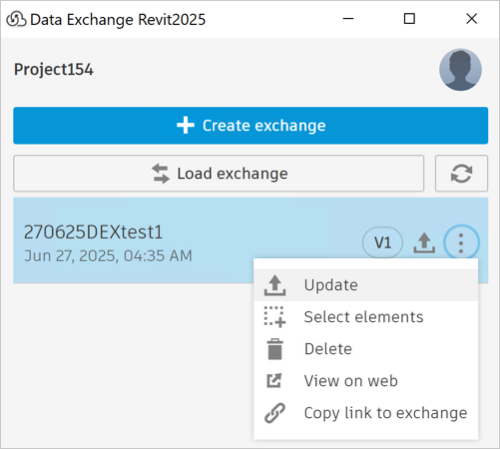
The exchange will update to the latest version, with the latest changes (for example, V1 to V2).
